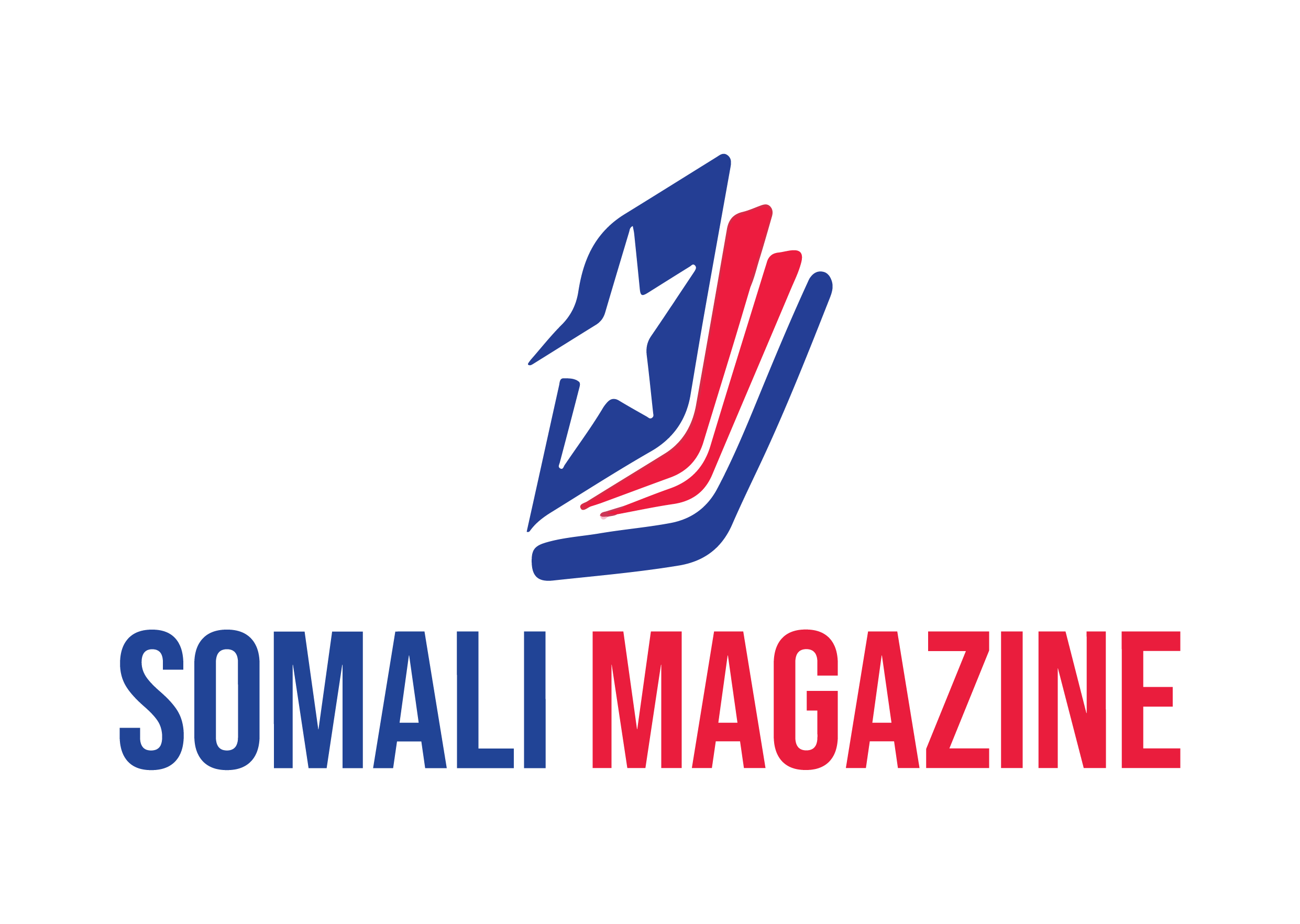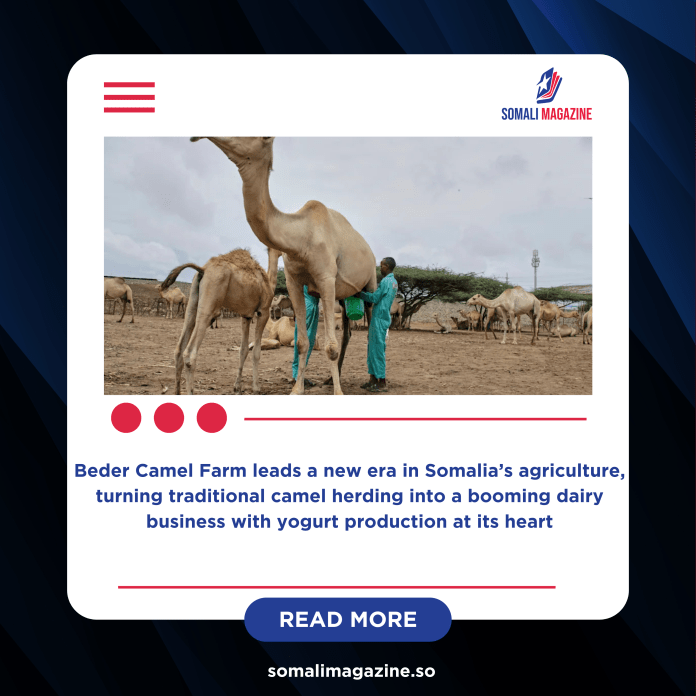Facebook Twitter (X) Instagram Somali Magazine - People's Magazine
Camels have always played an important role in Somali life — providing food, transport, and cultural pride. But now, on the edges of Mogadishu, camels are at the center of a new farming shift that could transform Somalia’s dairy industry.
On a June morning, dozens of camels roam the sandy grounds of Beder Camel Farm, munching on fresh feed as herders watch over them. In a nearby shed, workers carefully milk the camels and store the milk in clean containers. This is no ordinary camel farm — it’s part of a new wave of modern camel dairies popping up across Somalia’s capital.
Demand for camel milk is growing fast, driven by local business owners who see it as a valuable but underused resource. Somalia has over 7 million camels — more than any other country — but only a small amount of that milk reaches city markets.
Dr. Abdirisak Mire Hashi, a veterinarian and manager of Beder Camel Farm, is leading efforts to modernize camel milk production. For him, it’s not just about business. It’s about combining Somali heritage with modern farming techniques.
“Somalis are proud of their tradition of raising camels,” Hashi said. “But how we care for camels has changed a lot.”
Thanks to better food, regular vet checkups, and improved milking methods, each camel at Beder now produces up to 10 liters of milk daily — twice as much as traditional herders usually get. These changes mean more milk can reach homes, stores, and markets.
Jama Omar, the farm’s CEO, says Beder was one of the first modern camel farms in the country when it started in 2006. Today, it supplies about 40% of Somalia’s camel milk market and employs nearly 200 full-time workers, plus seasonal staff during busy periods.
One of Beder’s most exciting developments is its yogurt factory — the first in Somalia to make yogurt from camel milk. Inside the factory, workers process the milk into yogurt, which is then sold in supermarkets across Mogadishu under the Beder brand.
Nelson Njoki Githu, a food engineer from Kenya, oversees production. He says camel milk yogurt is not just new — it’s healthier for many people.
“Camel milk has less lactose than cow milk, so people who are lactose intolerant can drink it,” Githu explained. “It also has more vitamin C, iron, and zinc.”
Nutritionist Dr. Yahye Sholle agrees. He says camel milk yogurt can help fight malnutrition in Somalia.
“It’s rich in calcium, magnesium, and other vitamins that support bone and gut health,” Sholle said. “It also contains probiotics, which are good for digestion.”
These health benefits have helped make Beder’s yogurt popular in the growing dairy market. Hashi says the next step is to expand. The farm plans to open more milk collection points outside Mogadishu and train herders in rural areas on better milking and hygiene practices.
“If we modernize how we raise camels and process the milk, we can create jobs, improve nutrition, and take pride in our local products,” Hashi said.
The Somali government supports this growth. Dr. Kasim Abdi Moalim from the Ministry of Livestock said camel milk has many uses — even in cosmetics, as seen in places like the UAE.
“We’re working on a master investment plan and a Dairy Act to help develop this sector,” he said.
As the sun sets over the paddocks, camels continue their slow march — a symbol of a tradition now moving toward the future. From ancient desert journeys to yogurt on city shelves, Somalia’s camels are taking on a new role — one that could feed the nation in more ways than one.

